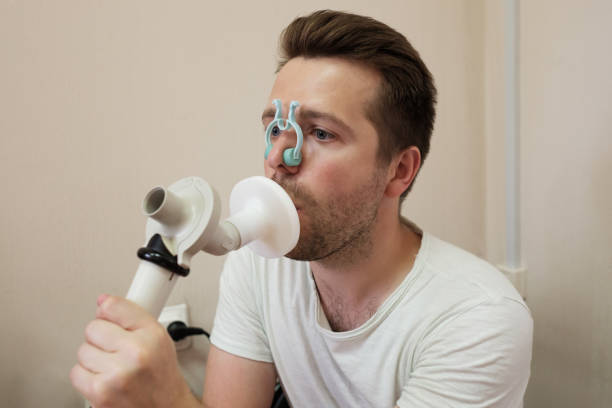
Understanding Lung Function Testing – Spirometry
A Vital Tool for Respiratory Health
Introduction
Maintaining good respiratory health is crucial for a fulfilling life. One essential tool in assessing lung function is spirometry. In this article, we will explore what spirometry is, why it’s important, and how it can benefit you.
What is Spirometry?
Spirometry is a simple and non-invasive test used to measure how well your lungs are functioning. It assesses the amount and speed of air that you can inhale and exhale. The test helps healthcare providers evaluate respiratory conditions and monitor treatment effectiveness.

Why is Spirometry Important?
1. Early Detection of Respiratory Disorders:
Spirometry plays a vital role in the early detection of respiratory disorders, such as asthma, chronic obstructive pulmonary disease (COPD), and interstitial lung disease. Detecting these conditions in their early stages allows for timely intervention and better management.
2. Monitoring Disease Progression:
For individuals with known respiratory conditions, spirometry is invaluable in monitoring disease progression. By tracking lung function over time, healthcare providers can make adjustments to treatment plans, ensuring you receive the most effective care.
3. Assessing Treatment Response:
Spirometry helps healthcare providers gauge how well your prescribed treatments are working. This information is critical in making adjustments to medications or therapies to ensure you’re receiving the most effective treatment for your specific condition.
How is Spirometry Performed?
The spirometry test is painless and typically takes about 15 to 30 minutes. Here’s what you can expect during the procedure:
1. Preparation
- You may be asked to avoid large meals, caffeine, and strenuous exercise before the test.
- It’s essential to inform your healthcare provider about any medications you are taking.
2. The Test Itself
- You will be seated comfortably.
- A soft clip will be placed on your nose to ensure all breathing occurs through your mouth.
- You’ll be instructed to take a deep breath and exhale forcefully into a tube connected to a spirometer.
(Spirometer: a device that measures the amount of air you inhale and exhale)
3. Repeating the Test
- The test may need to be repeated several times to ensure accuracy.
- You may also be asked to perform specific maneuvers, such as rapid inhalation and exhalation, to assess different aspects of lung function.
Interpreting Spirometry Results
Understanding your spirometry results is crucial for both you and your healthcare provider. The following are some key measurements assessed during a spirometry test:
1. Forced Vital Capacity (FVC)
- This measures the maximum amount of air you can exhale forcefully after a deep breath.
2. Forced Expiratory Volume in 1 second (FEV1)
- This measures the amount of air you can exhale in the first second after a deep breath.
3. FEV1/FVC Ratio
- This ratio compares the amount of air exhaled in the first second to the total amount exhaled. It’s a crucial indicator of lung health.
4. Peak Expiratory Flow (PEF)
- This measures the maximum speed at which you can exhale air.
5. Forced Expiratory Flow (FEF25-75)
- This assesses the average flow rate during the middle half of the forced vital capacity.
Conclusion
Spirometry is an invaluable tool in assessing and monitoring lung function. It helps detect and manage respiratory conditions, ensuring you receive the most effective care for your specific needs. If you have any concerns about your respiratory health, don’t hesitate to reach out to your healthcare provider for further evaluation and guidance. Remember, early detection and intervention can make a significant difference in your overall well-being.
